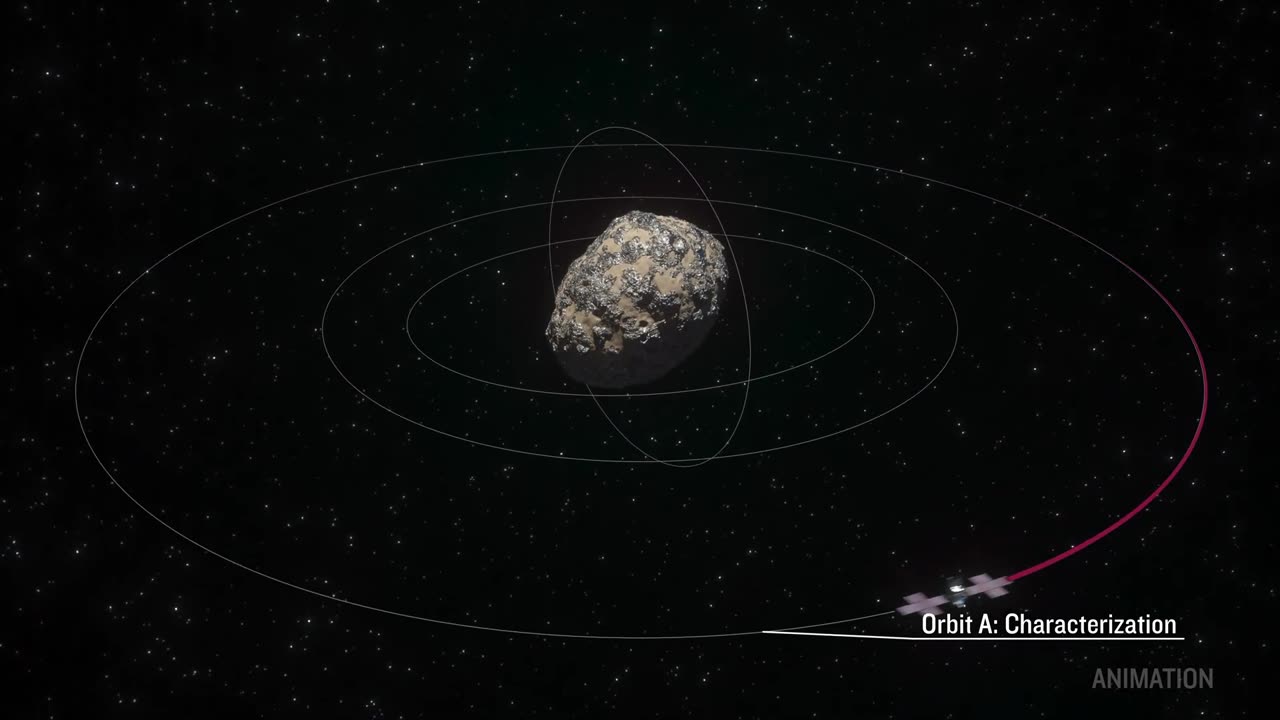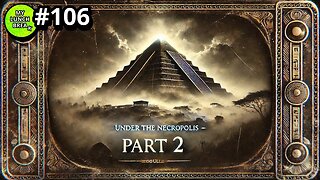Premium Only Content

How Will #MissionToPsyche Use Gravity to Study An Asteroid?
#gravity #astroid #studyasteroid #targetasteroid #missionpsyche #psyche #mars #moon #space #rocketlaunch #spaceexploration #marsexploration# nasamission #nasaspacemission #spacemission #astrology #spaceimaging #spacetechnology #spacescience #moonexploration #jupiter #stakleytingo #wolfchamp #lunar #lunarexploration #spacecraft #spacrocket #spaceshuttel
How Will #MissionToPsyche Use Gravity to Study An Asteroid?
NASA’s Psyche mission will use gravity to study the interior structure of its asteroid target, also named Psyche.
By measuring subtle changes in the X-band radio waves bouncing back and forth between the spacecraft and Earth, the team can precisely determine the asteroid’s mass, gravity field, rotation, orientation, and wobble. These measurements will help scientists learn more about how Psyche, as well as other bodies in our solar system, formed. The gravity science investigation team is led by Maria Zuber of MIT.
The Psyche mission is the first to a metal-rich asteroid. It is expected to launch in October 2023. The spacecraft will begin orbiting the asteroid Psyche in 2029.
Learn about this first-of-its-kind mission at: https://www.nasa.gov/psyche.
Credit: NASA/JPL-Caltech/ASU
Produced by: True Story Films
How Will #MissionToPsyche Use Gravity to Study An Asteroid?
NASA’s Psyche mission will use gravity to study the interior structure of its asteroid target, also named Psyche.
By measuring subtle changes in the X-band radio waves bouncing back and forth between the spacecraft and Earth, the team can precisely determine the asteroid’s mass, gravity field, rotation, orientation, and wobble. These measurements will help scientists learn more about how Psyche, as well as other bodies in our solar system, formed. The gravity science investigation team is led by Maria Zuber of MIT.
The Psyche mission is the first to a metal-rich asteroid. It is expected to launch in October 2023. The spacecraft will begin orbiting the asteroid Psyche in 2029.
Learn about this first-of-its-kind mission at: https://www.nasa.gov/psyche.
Credit: NASA/JPL-Caltech/ASU
Produced by: True Story Films
How Will #MissionToPsyche Use Gravity to Study An Asteroid?
NASA’s Psyche mission will use gravity to study the interior structure of its asteroid target, also named Psyche.
By measuring subtle changes in the X-band radio waves bouncing back and forth between the spacecraft and Earth, the team can precisely determine the asteroid’s mass, gravity field, rotation, orientation, and wobble. These measurements will help scientists learn more about how Psyche, as well as other bodies in our solar system, formed. The gravity science investigation team is led by Maria Zuber of MIT.
The Psyche mission is the first to a metal-rich asteroid. It is expected to launch in October 2023. The spacecraft will begin orbiting the asteroid Psyche in 2029.
Learn about this first-of-its-kind mission at: https://www.nasa.gov/psyche.
Credit: NASA/JPL-Caltech/ASU
Produced by: True Story Films
How Will #MissionToPsyche Use Gravity to Study An Asteroid?
NASA’s Psyche mission will use gravity to study the interior structure of its asteroid target, also named Psyche.
By measuring subtle changes in the X-band radio waves bouncing back and forth between the spacecraft and Earth, the team can precisely determine the asteroid’s mass, gravity field, rotation, orientation, and wobble. These measurements will help scientists learn more about how Psyche, as well as other bodies in our solar system, formed. The gravity science investigation team is led by Maria Zuber of MIT.
The Psyche mission is the first to a metal-rich asteroid. It is expected to launch in October 2023. The spacecraft will begin orbiting the asteroid Psyche in 2029.
Learn about this first-of-its-kind mission at: https://www.nasa.gov/psyche.
Credit: NASA/JPL-Caltech/ASU
Produced by: True Story Films
How Will #MissionToPsyche Use Gravity to Study An Asteroid?
NASA’s Psyche mission will use gravity to study the interior structure of its asteroid target, also named Psyche.
By measuring subtle changes in the X-band radio waves bouncing back and forth between the spacecraft and Earth, the team can precisely determine the asteroid’s mass, gravity field, rotation, orientation, and wobble. These measurements will help scientists learn more about how Psyche, as well as other bodies in our solar system, formed. The gravity science investigation team is led by Maria Zuber of MIT.
The Psyche mission is the first to a metal-rich asteroid. It is expected to launch in October 2023. The spacecraft will begin orbiting the asteroid Psyche in 2029.
Learn about this first-of-its-kind mission at: https://www.nasa.gov/psyche.
Credit: NASA/JPL-Caltech/ASU
Produced by: True Story Films
How Will #MissionToPsyche Use Gravity to Study An Asteroid?
NASA’s Psyche mission will use gravity to study the interior structure of its asteroid target, also named Psyche.
By measuring subtle changes in the X-band radio waves bouncing back and forth between the spacecraft and Earth, the team can precisely determine the asteroid’s mass, gravity field, rotation, orientation, and wobble. These measurements will help scientists learn more about how Psyche, as well as other bodies in our solar system, formed. The gravity science investigation team is led by Maria Zuber of MIT.
The Psyche mission is the first to a metal-rich asteroid. It is expected to launch in October 2023. The spacecraft will begin orbiting the asteroid Psyche in 2029.
Learn about this first-of-its-kind mission at: https://www.nasa.gov/psyche.
Credit: NASA/JPL-Caltech/ASU
Produced by: True Story Films
How Will #MissionToPsyche Use Gravity to Study An Asteroid?
NASA’s Psyche mission will use gravity to study the interior structure of its asteroid target, also named Psyche.
By measuring subtle changes in the X-band radio waves bouncing back and forth between the spacecraft and Earth, the team can precisely determine the asteroid’s mass, gravity field, rotation, orientation, and wobble. These measurements will help scientists learn more about how Psyche, as well as other bodies in our solar system, formed. The gravity science investigation team is led by Maria Zuber of MIT.
The Psyche mission is the first to a metal-rich asteroid. It is expected to launch in October 2023. The spacecraft will begin orbiting the asteroid Psyche in 2029.
Learn about this first-of-its-kind mission at: https://www.nasa.gov/psyche.
Credit: NASA/JPL-Caltech/ASU
Produced by: True Story Films
How Will #MissionToPsyche Use Gravity to Study An Asteroid?
NASA’s Psyche mission will use gravity to study the interior structure of its asteroid target, also named Psyche.
By measuring subtle changes in the X-band radio waves bouncing back and forth between the spacecraft and Earth, the team can precisely determine the asteroid’s mass, gravity field, rotation, orientation, and wobble. These measurements will help scientists learn more about how Psyche, as well as other bodies in our solar system, formed. The gravity science investigation team is led by Maria Zuber of MIT.
The Psyche mission is the first to a metal-rich asteroid. It is expected to launch in October 2023. The spacecraft will begin orbiting the asteroid Psyche in 2029.
Learn about this first-of-its-kind mission at: https://www.nasa.gov/psyche.
Credit: NASA/JPL-Caltech/ASU
Produced by: True Story Films
-
 11:19
11:19
Tundra Tactical
19 hours ago $3.09 earnedI Saw How CMMG Makes Guns.
15.9K6 -
 15:34
15:34
Misha Petrov
15 hours agoReacting To TikTok’s Most DELUSIONAL Takes!
18.1K21 -
 1:52:24
1:52:24
Squaring The Circle, A Randall Carlson Podcast
1 day ago#032 Flournoy Holmes' Artwork Helped Define The Southern Rock Phenomenon of The Early 1970's
15.6K3 -
 19:56
19:56
inspirePlay
1 day ago $0.21 earnedWalking with Lions & Facing Africa’s Wild Side | Safari Adventure with the Grid Championship Crew!
14.7K1 -
 10:50
10:50
RTT: Guns & Gear
1 day ago $0.72 earnedBudget Friendly Carry 2011: EAA Girsan Brat 2311
10.6K3 -
 3:49:06
3:49:06
Alex Zedra
16 hours agoLIVE! New Game | Nuclear Nightmare
102K14 -
 25:08
25:08
MYLUNCHBREAK CHANNEL PAGE
1 day agoUnder The Necropolis - Pt 2
284K78 -
 1:45:59
1:45:59
Spittin' Chiclets
1 day agoCanadian Chokejob - Game Notes Live From Chicago - 12.28.2024
262K32 -
 9:18
9:18
Space Ice
1 day agoThe Guyver - Alien Bug Suits, Exploding Dragons, & Mark Hamill - Weirdest Movie Ever
167K27 -
 9:31
9:31
Silver Dragons
1 day agoSilver Has Failed - Can it Set the Record Next Year? THIS BANK SAYS YES!
4.94K2